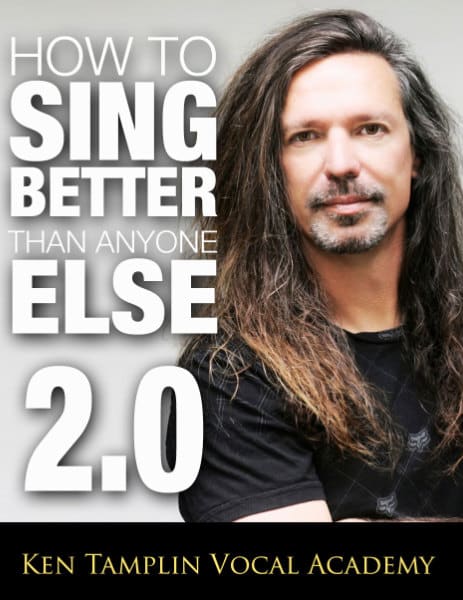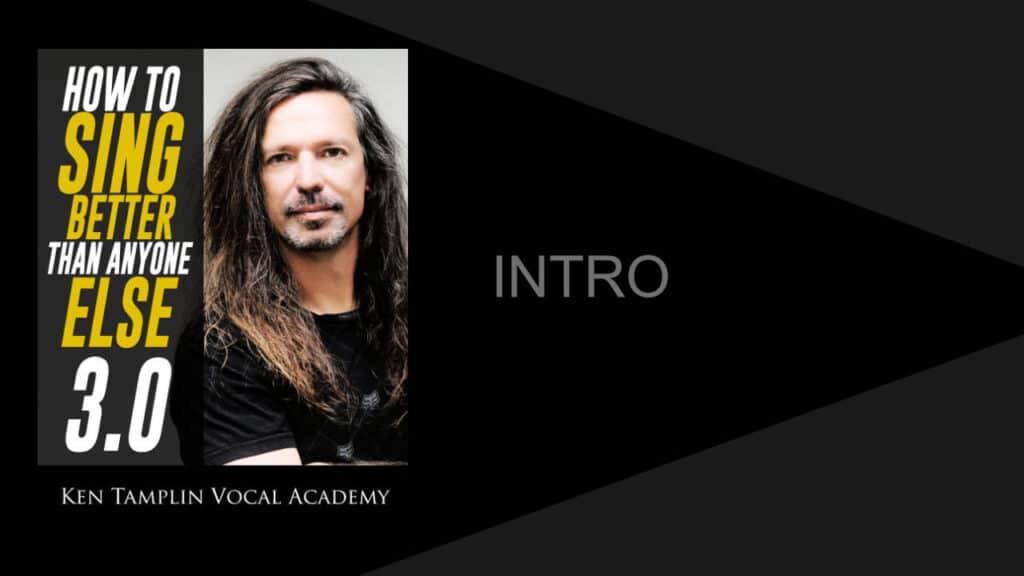
If you’ve ever dreamed of having a voice that stands out among the crowd, look no further. This article will guide you through the essential steps to sing better than everyone else. From mastering proper breathing techniques to developing impeccable pitch and control, you’ll discover the secrets to unlocking your full potential as a singer. So get ready to elevate your vocal performance and leave audiences in awe as you take the stage with confidence and skill.

Understanding Your Voice
Discover Your Voice Type
To sing better, it’s essential to understand your unique voice type. There are four main voice types: soprano, alto, tenor, and bass. Discovering your voice type will help you understand the range and characteristics of your voice, enabling you to choose appropriate songs and vocal exercises that suit your voice best. While it’s important to embrace and work with your natural voice, remember that with proper technique and practice, you can develop your vocal abilities and push the boundaries of your voice type.
Identify Your Range
Your vocal range refers to the span between the highest and lowest notes you can comfortably sing. Identifying your range is crucial for selecting songs that showcase your strengths and allow you to sing with ease. To determine your range, practice vocal exercises that gradually ascend and descend in pitch while paying attention to the highest and lowest notes you can produce without straining. Knowing your range will help you choose songs that lie comfortably within your vocal capabilities.
Understanding Vocal Registers
Vocal registers are distinct areas of your vocal range, each characterized by specific tonal qualities and anatomical coordination. The three main vocal registers are the chest register, head register, and mixed register. The chest register refers to the lower and more powerful range, while the head register encompasses the higher, lighter, and more heady tones. The mixed register combines elements of both the chest and head registers. Understanding and mastering these registers will give you more vocal control and flexibility, allowing you to sing various styles and genres effectively.
Developing Proper Technique
Mastering Breath Control
Breath control is the foundation of good vocal technique. By learning how to control your breath, you can achieve better overall vocal control, sustain longer phrases, and produce more powerful, resonant sounds. Proper breath control involves breathing deeply from the diaphragm, maintaining steady airflow while singing, and using breath support to control the release of air. To improve your breath control, practice specific exercises such as diaphragmatic breathing and sustained note exercises. By mastering breath control, you’ll enhance your vocal abilities and prevent strain and fatigue while singing.
Improving Vocal Projection
Vocal projection refers to the ability to project your voice effectively without straining or shouting. It is crucial for commanding attention and delivering an impactful performance. To improve your vocal projection, focus on techniques that help you maximize your resonance, such as proper posture, engaging your core muscles, and opening up your throat and mouth. Additionally, practicing vocal exercises that target resonance and projection, such as vocal sirens and sustained vowels, can help you develop a powerful and resonant voice.
Working on Vocal Resonance
Resonance is the quality of sound that amplifies and enriches your voice. It adds depth, warmth, and color to your vocal tone, making your voice more captivating and pleasant to listen to. To develop vocal resonance, focus on exercises that promote proper resonance placement, such as humming, lip trills, and “ng” sounds. By experimenting with different placements and resonating spaces, you can unlock the full potential of your voice and create a richer and more resonant sound.
Expanding Vocal Range
Expanding your vocal range allows you to sing a wider variety of songs and tackle challenging musical passages. To expand your range, practice exercises that gradually extend your highest and lowest notes. Start by focusing on the range you’re most comfortable with and gradually push the boundaries by working on exercises that target your vocal registers and facilitate coordination between your chest and head voice. Patience and consistent practice are key to gradually expanding your vocal range safely and effectively.
Care for Your Vocal Cords
Taking care of your vocal cords is crucial for maintaining a healthy and sustainable singing voice. Adequate hydration, vocal warm-ups, and vocal rest are essential components of vocal cord care. Hydration keeps your vocal cords lubricated, while vocal warm-ups prepare your voice for the demands of singing. Additionally, incorporating vocal rest into your routine gives your vocal cords time to recover and prevents overuse and strain. Remember to avoid excessive throat clearing, yelling, and smoking, as these can damage your vocal cords. Prioritizing vocal health will contribute to long-term vocal success.

Improving Vocal Warm-ups
Importance of Warm-ups
Vocal warm-ups are essential before every singing session as they prepare your voice for optimal performance and minimize the risk of strain or injury. Warm-ups help relax your vocal muscles, improve breath control, and increase vocal range. They also promote coordination between your breath, vocal cords, and resonance spaces. A warm-up routine should be tailored to your specific vocal needs and can include a combination of breathing exercises, lip trills, tongue and jaw exercises, and vocal scales. By consistently incorporating warm-ups into your practice routine, you’ll experience improved vocal flexibility and overall vocal performance.
Breathing Exercises
Proper breathing is the foundation of good singing technique. Start your warm-up routine by focusing on breathing exercises that promote deep diaphragmatic breathing. Diaphragmatic breathing involves expanding your abdomen as you inhale, allowing the diaphragm to descend and engage fully. Practice exercises like the “sigh” exercise, where you inhale deeply through your nose, and then exhale in a controlled manner, focusing on releasing tension in your body. These exercises help strengthen your diaphragm, improve breath control, and set the stage for optimal vocal performance.
Lip Trills and Humming
Lip trills and humming exercises are excellent for warming up your vocal cords and promoting proper vocal resonance. To perform lip trills, gently press your lips together and produce a buzzing sound while exhaling. Humming involves producing a low, continuous sound by closing your mouth and vibrating your vocal cords. By practicing lip trills and humming, you engage your vocal cords and vocalize in a gentle and controlled manner, helping your voice warm up gradually and reduce vocal strain.
Tongue and Jaw Exercises
Tongue and jaw exercises can help relax tension in these areas and promote better articulation and diction while singing. Simple exercises like tongue rolls, where you flutter your tongue against the back of your teeth, or jaw stretches, where you open your mouth wide and release any tension, can be beneficial warm-ups. By incorporating these exercises into your warm-up routine, you’ll improve your vocal clarity and enunciation, ensuring that your words are understood and your voice resonates more clearly.
Vocalizing Scales and Arpeggios
Scales and arpeggios are fundamental vocal exercises that help improve vocal agility, accuracy, and pitch control. Vocalizing scales involves singing a series of ascending and descending notes in a particular key, gradually increasing the range and speed as you progress. Arpeggios, on the other hand, involve singing the individual notes of a chord in a specific order. Both exercises enhance your vocal coordination and train your ear to recognize intervals and stay in tune. Incorporate scales and arpeggios into your warm-up routine to improve your overall vocal technique and precision.
Enhancing Vocal Flexibility
Practicing Lip Rolls
Lip rolls, also known as lip bubbles or lip trills, are versatile vocal exercises that contribute to enhancing your vocal flexibility. To perform lip rolls, gently press your lips together and produce a buzzing sound while exhaling. This exercise engages your vocal cords and requires control over your airflow, allowing you to develop better coordination between your diaphragm, vocal cords, and breath support. By practicing lip rolls regularly, you’ll increase your vocal flexibility, agility, and the ability to smoothly transition between different notes and vocal registers.
Incorporating Vocal Exercises
Vocal exercises designed to target different aspects of your vocal technique and range are valuable tools for enhancing vocal flexibility. These exercises can include scales, arpeggios, and various interval jumps. By consistently practicing exercises that challenge your vocal abilities, you train your voice to adapt to different musical demands and expand your vocal capabilities. Working on exercises that cover a broad range of intervals, dynamics, and vocal registers will ultimately enhance your flexibility and versatility as a singer.
Experimenting with Vocal Runs
Vocal runs are melodic embellishments that involve singing rapid sequences of notes with precision and fluidity. Incorporating vocal runs into your practice routine can help you improve your vocal flexibility and agility. Start by practicing simple runs using common scales or melodic patterns. As you become more comfortable, challenge yourself to incorporate more intricate and challenging runs into your singing. Remember to start slowly and gradually increase the speed as you gain proficiency. By experimenting with vocal runs, you’ll develop a greater sense of control over your voice and introduce impressive melodic variations to your singing style.
Utilizing Vocal Drills
Vocal drills are repetitive exercises that target specific vocal techniques or challenges. These drills can focus on breath control, vowel placement, pitch accuracy, or any other aspect of vocal production that requires improvement. By incorporating vocal drills into your regular practice routine, you’ll reinforce good vocal habits, increase muscle memory, and strengthen your overall vocal technique. As you progress, you can gradually increase the difficulty level of the drills to continue challenging yourself and further enhance your vocal flexibility.
Training with Vocal Challenges
Challenging yourself with difficult songs, vocal parts, or genres is an effective way to push the boundaries of your vocal flexibility. Attempt songs with wide vocal ranges, intricate melodies, or complex rhythms to stretch your voice and improve your overall vocal capabilities. By taking on vocal challenges, you’ll discover new aspects of your voice and push beyond your comfort zone, ultimately expanding your vocal flexibility and versatility.

Developing Musicality
Studying Music Theory
Music theory is the foundation of musical understanding and can greatly enhance your singing abilities. Learning fundamental concepts such as scales, chords, intervals, and rhythm allows you to interpret music more effectively and make informed musical choices. By understanding music theory, you’ll have a broader understanding of song structures and harmonic progressions, enabling you to sing with greater musicality and expression.
Understanding Melody and Harmony
Melody and harmony are essential elements of any song. Understanding how melodies and harmonies work together helps you interpret and perform songs with more depth and emotion. Study the melody of a song and identify the key phrases and climactic moments. Additionally, analyze the harmony to determine chord progressions and how they support the melody. By understanding melody and harmony, you can shape your singing to emphasize the emotional nuances of a song, creating a captivating and expressive performance.
Working on Ear Training
Ear training is the process of developing your ability to recognize and reproduce musical pitches, intervals, and chords by ear. This skill is crucial for accurate singing and staying in tune. Practice exercises that involve singing intervals or chords by ear, and gradually increase the difficulty level as you improve. Ear training helps refine your pitch accuracy, tonal memory, and overall musicality. By honing your ear training skills, you’ll become more confident in your ability to listen and reproduce musical elements accurately.
Improving Rhythm and Timing
Rhythm and timing are essential aspects of singing that contribute to a well-rounded performance. Practice exercises that focus on rhythmic patterns, syncopation, and different time signatures. By improving your rhythm and timing, you’ll be able to sing with precision and effectively convey the groove and feel of a song. A strong sense of rhythm also allows you to experiment with rhythmic variations and adds an extra layer of musicality to your singing.
Expressing Emotion Through Singing
Connecting with Lyrics
Connecting with the lyrics of a song is crucial for delivering a heartfelt and emotionally resonant performance. Take the time to deeply understand the meaning and emotions behind the lyrics. Consider the story the song tells or the message it conveys, and find personal connections or experiences that can help you relate to the lyrics on a deeper level. By connecting with the lyrics, you’ll be able to communicate the intended emotions to your audience, making your performance more authentic and engaging.
Developing Your Artistic Interpretation
Every singer has a unique artistic interpretation, and developing your own interpretation of a song allows you to showcase your individuality and connect with your audience. Experiment with different phrasing, dynamics, and vocal inflections to convey the emotions and nuances of the song in your own style. Allow yourself to be vulnerable and expressive, putting your own personal touch on each performance. Developing your artistic interpretation will give your singing a distinct flavor and captivate your audience.
Utilizing Vocal Dynamics
Vocal dynamics refer to the variations in volume, intensity, and expression within a performance. Mastering vocal dynamics allows you to bring songs to life and convey a wide range of emotions. Experiment with different dynamic levels, from quiet and intimate to powerful and expansive. Use dynamics strategically to emphasize important lyrics or dramatic moments in a song. By incorporating vocal dynamics into your singing, you’ll be able to create captivating performances that engage your audience emotionally.
Exploring Vocal Styles and Genres
Exploring different vocal styles and genres broadens your musical horizons and helps you develop versatility as a singer. Experiment with various musical genres, such as pop, jazz, rock, or classical, and study the vocal techniques and stylistic elements associated with each. By exploring different vocal styles, you’ll expand your vocal range, develop new vocal textures, and gain a deeper understanding of the expressive possibilities of your voice. Embrace the diversity of music and allow it to inspire and influence your singing style.

Gaining Stage Presence
Mastering Breath Control
Breath control is crucial for stage presence as it allows you to maintain vocal stability and project your voice confidently. By mastering breath control, you’ll be able to deliver powerful and sustained notes while maintaining good posture and engaging with your audience. Implement proper breathing techniques before and during your performance to ensure a steady and controlled airflow. When you have control over your breath, you’ll exude confidence and captivate your audience with your stage presence.
Working on Body Language
Body language plays a significant role in stage presence and enhances the overall impact of your performance. Practice good posture by standing tall, keeping your shoulders relaxed, and distributing your weight evenly. Utilize gestures and movements that complement the mood and energy of the song, making sure they feel natural and purposeful. By incorporating engaging and expressive body language, you’ll create a visual connection with your audience and enhance the emotional impact of your performance.
Engaging with the Audience
Engaging with the audience is vital for creating a memorable and interactive performance. Make eye contact with different sections of the audience to establish a connection and draw them into your performance. Smile and exude positive energy to create a welcoming and engaging atmosphere. Interact with the audience during appropriate moments, such as encouraging them to clap or sing along. By actively engaging with your audience, you’ll establish a rapport and make your performance more memorable and enjoyable.
Utilizing Facial Expressions
Facial expressions are a powerful tool for conveying emotions and drawing your audience into your performance. Practice expressing a range of emotions through facial gestures, such as smiling, frowning, or raising an eyebrow, to match the mood of the song. Use your face to tell a story and effectively communicate the emotions behind the lyrics. By utilizing facial expressions, you’ll enhance your stage presence and make a stronger connection with your audience.
Improving Performance Confidence
Confidence is key to commanding the stage and delivering a memorable performance. Building performance confidence involves consistent practice, preparation, and positive self-talk. Rehearse your songs until you are comfortable with the material, and visualize yourself delivering a confident and successful performance. Recognize and celebrate your achievements as a singer, and focus on your strengths rather than dwelling on any perceived weaknesses. As you continue to gain experience and receive positive feedback, your confidence will grow, allowing you to perform with greater ease and charisma.
Seeking Professional Vocal Training
Benefits of Vocal Lessons
Seeking professional vocal training can have numerous benefits for your vocal development. A qualified vocal coach can provide personalized guidance and feedback, helping you identify areas for improvement and develop effective practice strategies. They can also assist you in addressing any technical issues or vocal challenges you may encounter. Moreover, vocal lessons can help you expand your repertoire, learn proper vocal techniques, and develop your own unique singing style. The guidance and support from a skilled vocal coach can greatly enhance your progress and ensure that you make the most of your singing potential.
Finding a Qualified Vocal Coach
When seeking a vocal coach, it’s important to find a qualified instructor who has a solid educational background and extensive experience in vocal training. Look for certifications or relevant education in vocal performance, music education, or related fields. Additionally, research their reputation and read reviews or testimonials from previous students. A qualified vocal coach should possess excellent communication skills, patience, and the ability to tailor their teaching to your specific needs and goals. Finding the right vocal coach is essential for receiving effective and enjoyable vocal training.
Customized Training Programs
A professional vocal coach can create customized training programs to address your specific vocal goals and needs. They will evaluate your current abilities, identify areas for improvement, and develop a plan that targets your unique vocal challenges. Customized training programs may include exercises to improve breath control, expand vocal range, enhance resonance, or work on specific genres or styles. By following a tailored training program, you can effectively work towards your vocal goals and make progress in a structured and efficient manner.
Receiving Feedback and Guidance
One of the most valuable aspects of vocal training is receiving constructive feedback and guidance from a professional. A vocal coach can pinpoint areas that need improvement, identify technical issues, and provide specific instructions on how to address them. They can also guide you in selecting appropriate songs, interpreting lyrics, and refining your overall vocal technique. Regular feedback and guidance from a vocal coach are invaluable tools for growth and improvement, enabling you to refine your skills and become the best singer you can be.

Practicing Regularly and Consistently
Dedicate Time for Practice
Regular and consistent practice is essential for improving your singing abilities. Set aside dedicated time in your schedule for focused practice sessions and make it a priority. Establishing a consistent practice routine will help you develop discipline, build muscle memory, and make steady progress. Consistency is key to strengthening your vocal technique, expanding your vocal range, and refining your performance skills. Aim for daily practice sessions, even if they are shorter, rather than sporadic and longer sessions.
Maintaining a Practice Schedule
To ensure consistent practice, create a practice schedule that works best for you. Schedule your practice sessions during a time when you are most alert and focused, and when you can dedicate uninterrupted time to your vocal practice. Stick to your schedule as much as possible, treating your practice time as a commitment to your own growth as a singer. By maintaining a practice schedule, you’ll develop a habit of regular practice and maintain steady progress towards your vocal goals.
Incorporating Vocal Exercises
Vocal exercises should be an integral part of your practice routine. Incorporate exercises that target breath control, vocal flexibility, resonance, and vocal range into your practice sessions. Begin with warm-up exercises to prepare your voice, then focus on specific vocal techniques you want to improve. Regularly revisit fundamental exercises such as scales and arpeggios to maintain and strengthen your vocal foundation. Vocal exercises should be practiced consistently to ensure continual improvement and maintain a healthy vocal technique.
Tracking Progress
Tracking your progress is essential for gauging improvement and maintaining motivation. Keep a journal or document your practice sessions to track areas of improvement and set goals. Audio or video recordings can be valuable tools for self-assessment and allow you to objectively evaluate your vocal development. Celebrate your achievements and milestones along the way, whether it’s hitting a challenging note or successfully performing a song. By tracking your progress, you’ll stay motivated and gain a sense of satisfaction as you witness your growth as a singer.
Learning from Successful Singers
Study Iconic Vocal Performances
Studying iconic vocal performances is a valuable way to hone your singing skills and gain inspiration. Analyze recordings or live performances of renowned singers and observe their technique, phrasing, dynamics, and stage presence. Pay attention to their vocal nuances, how they interpret lyrics, and the emotional impact they create. By studying the performances of successful singers, you’ll gain insights into different singing styles, unlock new possibilities for your own voice, and develop a deeper appreciation for the art of singing.
Analyze Vocal Techniques
Analyzing vocal techniques used by successful singers can help you expand your vocal repertoire and develop your own unique style. Focus on specific techniques such as vibrato, belting, falsetto, or vocal runs, and study how skilled singers employ these techniques in their performances. Experiment with incorporating these techniques into your own singing, adapting them to suit your voice and style. By analyzing and employing various vocal techniques, you’ll become a more versatile and expressive singer.
Emulate and Adapt
Emulating the singing style of successful singers can be a valuable step in developing your own unique style. By imitating skilled singers, you deepen your understanding of vocal techniques and gain firsthand experience in applying them. However, it’s important to adapt and personalize what you learn to suit your voice and artistic expression. Don’t aim to become a carbon copy of another singer, but rather fuse elements of different styles into your own unique sound. Emulating and adapting the techniques of successful singers is a stepping stone towards finding your own artistic voice.
Develop Your Unique Style
Developing your unique style is an ongoing process that comes from exploring and combining different elements of your voice, musical tastes, and personal experiences. Experiment with different genres, vocal techniques, and interpretations to discover what resonates with you and highlights your individuality. Don’t be afraid to take risks and step outside your comfort zone. Embrace your strengths and quirks, and cultivate an authentic and genuine expression of your voice. Developing your unique style allows you to stand out as an artist and connect with your audience on a deeper level.
In conclusion, singing better than everyone else requires a comprehensive approach that encompasses understanding your voice, developing proper technique, improving vocal warm-ups, enhancing vocal flexibility, developing musicality, expressing emotion through singing, gaining stage presence, seeking professional vocal training, practicing regularly and consistently, and learning from successful singers. By following these guidelines, dedicating regular time to practice, and embracing your uniqueness as a singer, you’ll continue to grow and improve your singing abilities, delighting both yourself and your audience with your vocal prowess.




